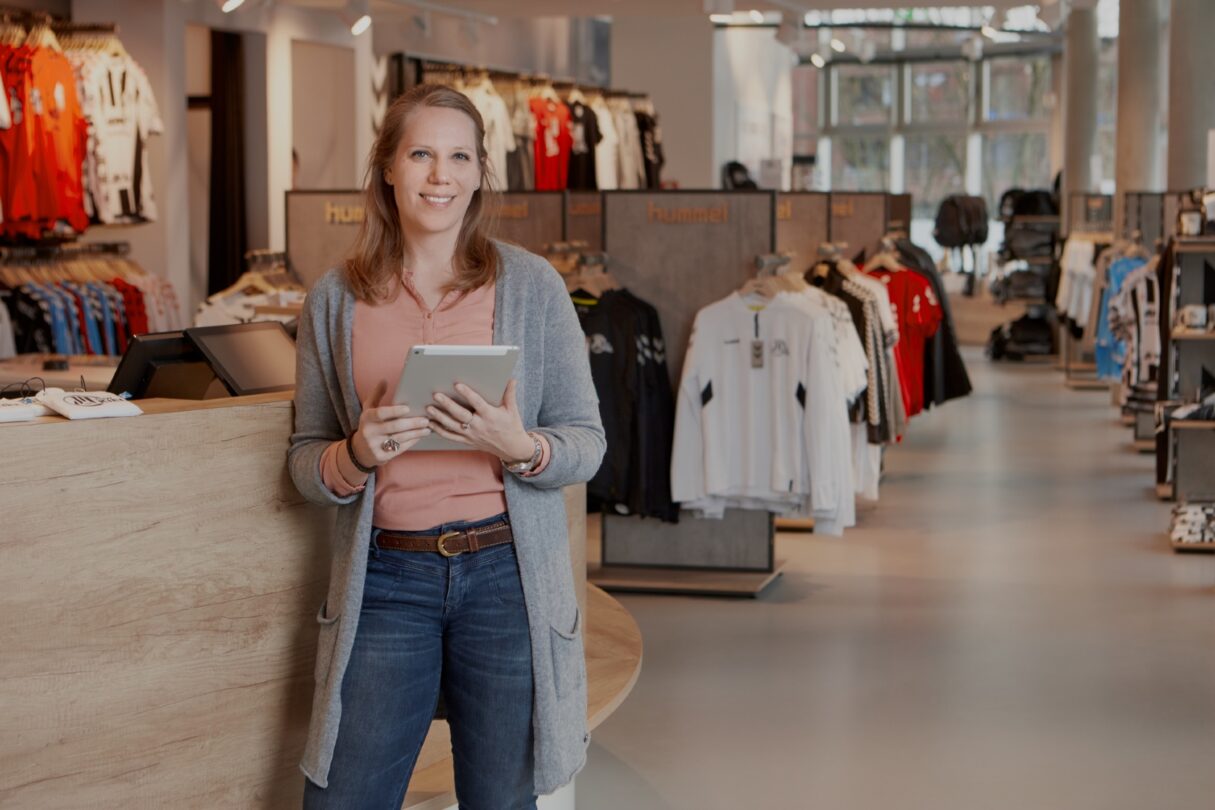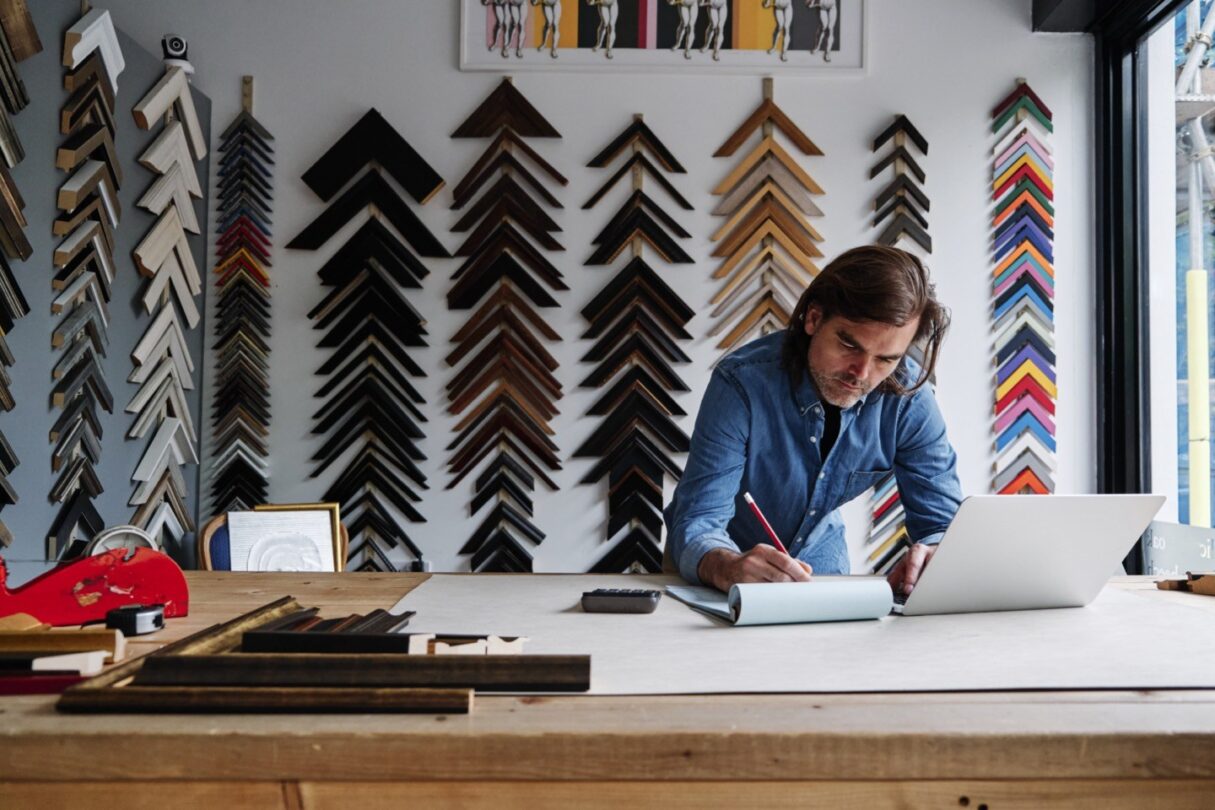Money Matters
How to start a clothing business
Want to start your own clothing business? Discover the 10 steps you need to take to turn your idea into reality - and a real company.

The UK’s fashion sector is the country’s largest creative industry, generating almost £60bn in sales in 2019.
If you’ve got the skills and vision, there’s enormous potential for making your mark in the industry.
But fashion is also highly competitive.
So, if you’re thinking of starting a clothing business, it’s worth taking the time to do your research and plan it out.
Whether you see yourself as the next Stella McCartney, running a boutique fashion store or providing niche services, there are many routes you can take when starting up a clothing or apparel business.
That said, the fundamentals are relatively similar across the board.
If you’re ready to work your socks off and throw your hat in the ring, your clothing business could be a real success.
Here’s what this article covers:
How to launch a clothing business in 10 steps
3. Research and test the waters
4. Design and manufacture the product
How to start a clothing business in the UK: Final thoughts
Dreaming of bossing your own business? Take our quiz to see how ready you are to take the plunge
How to launch a clothing business in 10 steps
While experience and training certainly help, you don’t need a degree from a fashion college to start your own clothing business.
What you do need is drive, vision and the processes in place to flourish.
The following tips will help you stitch a plan together. So, roll up your sleeves and find out how to start a clothing business.
1. Select your niche
The clothing industry is broad and comprised of thousands of interrelated companies. If you’re reading this article, you probably already have some idea of the specific sector you’re interested in.
All the same, it’s important to really specialise so that your business is distinct from others.
Say you’re looking at how to start a children’s clothing business. The fact is there are already many companies out there doing similar things.
Perhaps you want to design kids’ pyjamas. What sets your brand apart?
Is it the quality of the materials?
Maybe it’s the particular design (such as a focus on dinosaurs)?
Maybe it’s the use of organic cotton?
Or maybe you’re considering starting a lingerie business. Once again, the competition is intense, so you need to really narrow down your focus.
Maybe you’re interested in sports underwear – you might want to specialise further and produce underwear designed specifically for football players.
Or perhaps your focus is on an underserved sector – maybe bras for women who’ve had mastectomies or who’ve lost a limb.
2. Create a business plan
Your business plan is a blueprint for building your fashion firm. It defines what the company does, explains how it’s going to make money and how it’s going to be run.
If you want to raise funding for your small business (such as a bank loan or angel investment), being able to show a realistic business plan is essential.
Depending on what you plan to sell, your business plan will focus on different things. For instance, if you’re thinking of running an online retail business, you’d need to consider things such as storage, postage and packaging and your returns policy.
Whereas if you’re thinking of launching a boutique clothing store, you’d need to find premises, hire staff and set aside money for business rates.
Your business plan is a living document.
That means you need to keep updating and tweaking it over time – it should be flexible and let you change the direction you go in.
3. Research and test the waters
Market research is fundamental when it comes to starting a clothing business. You need to find out what people are wearing and if they’re interested in paying for your product.
If you’re starting a business on a shoestring, you won’t want to invest large amounts of money manufacturing garments that no one wants.
Say you’re thinking of starting a T-shirt printing business inspired by vintage designs. Before investing in large scale printing machinery, get a handful of your designs printed by someone else.
You can then try selling these online, at local markets or specialist shops. Depending on how they sell, you’ll have an idea of the level of demand that’s out there.
4. Design and manufacture the product
If you hope to create your own clothing line, you will likely need to design and manufacture the product itself.
You might have a background in fashion design already, but even if not, you can still get clothes designed and made by being organised and outsourcing tasks where necessary.
Here’s some of the steps you’ll need to take:
- Seek out inspiration for designs by keeping a mood board, taking photos of designs you like and collecting inspiration using mobile apps like Pinterest.
- Design items yourself or get someone else to create sketches of the product for you (either by hiring an employee or outsourcing to a freelance designer).
- Create a ‘pattern’. This is a guide for the manufacturer and contains detailed information on dimensions, size, material and fabric.
- Source fabrics either by visiting a wholesaler or getting your own design produced.
- Get some samples created. It’s normally faster and easier (if more expensive) to get them created in the UK so you can talk directly to the manufacturer.
- Find a manufacturer. They normally have a minimum run of orders. It’s often cheaper to get this done overseas, although you’ll have to wait longer for the item to be shipped and may face language barriers and time difference issues.
5. Marketing
People won’t know about your products or services without appropriate marketing.
Different types of marketing activities or strategies will be more or less appropriate depending on what you plan to sell, but will often include:
- A website
- High-quality photography
- Social media
- Advertising (online and in print)
- Influencers
- In-store ads and promotions
- Content.
6. Branding
Few things are more important to a clothing business than its brand.
Most importantly, fashion branding includes your company name and logo. But it also covers the colour scheme you use, the typeface of any written communications, the tone of voice in your written materials, the types of models you use – and much more.
It’s all about building a unique identity. People fall in love with brands that have an inspiring or relatable back story.
Say you were looking at how to start a shoe business targeted at cyclists. You’d want to choose a logo that could be easily stitched on to the surface of the shoe.
But you’d also want to select colours, styles and tones that you use on your website, on the shoebox or in adverts you create.
And it’s about the type of models who wear your shoes in photographs. Are they Lycra-clad executive commuters or bearded BMXers?
You’d then want to develop the brand’s story.
Perhaps your cycling shoe company was founded by a commuter who was sick of always having to carry spare shoes to the office.
By emphasising this story, you create a brand narrative that your target audience can relate to.
7. Think about finance
Starting a fashion business often requires a significant investment upfront, especially if you plan to manufacture items or sell them (retail or wholesale).
Look at your business plan again and add up all the potential costs you’re likely to encounter in your first year of business. Then, develop a plan to pay for this.
You might:
- Seek out grants, loans or investment
- Save up while working a part-time job
- Offer services (such as sewing or tailoring) then reinvest the cash in producing products.
Managing finances in a fashion business can be tough, but don’t let it stop you from fulfilling your small business dreams.
Research conducted by Sage in 2020 revealed that 46% of people who wish to start a business think being good with numbers in a key trait.
The reality is that only 40% of business owners think this is important.
8. Consider admin and legal
It’s not all glamorous catwalks and fashion shoots.
If you’re looking at how to set up a small clothing business, you’ll need to get accustomed to the administrative and legal sides of running a fashion firm too.
It’s worth using accounting software to stay on top of your admin and keep it all in one place.
This can help you save time, stay on top of inventory – so you can see what is (and isn’t) selling – remain compliant and ensure you pay your taxes on time.
Admin and legal issues to think about include:
- Legal structure: Decide whether you’ll be a sole trader (where you and the business are the same legal entity), limited company (where the business is separate to you) or a partnership (setting up with one or more people).
- Registering the company: Let HMRC know you are setting up a company. You’ll need to do this if you’re trading as a limited company.
- Registering your company name to ‘protect’ it: If you become a limited company this is done when you register the company and it protects the name. You can also technically do this as a sole trader too. Essentially, you pay £12 to create a limited company and ‘reserve’ the name.
- Registering intellectual property: If you are designing new clothing lines or have a logo you’ll want to register them so no one can copy your ideas. Depending on the business, you might want to register patents, trademarks, designs or copyright.
- Filing your accounts with HMRC: Depending on the legal structure you choose, you’ll have to file accounts and pay your taxes by specific deadlines.
- Business banking: It’s a good idea to open a business bank account where you manage all income and outgoings – and keep it separate from your personal spending accounts.
- Monitoring cash flow: This tells you if you’re spending more than you’re earning. Again, accounting software can help here.
- Keeping records: You’re legally obliged to keep records of invoices, expenses and bank statements.
- Hiring staff: If you’re hiring people, you’ll need to register with HMRC as an employer and follow various rules around employment. You’ll need to deal with payroll – using payroll software can help you stay compliant and automate your processes.
- Compliance: You’ll need to comply with any relevant industry standards (e.g., you can only market materials as ‘fair trade’ or ‘organic’ if they’ve passed certain standards tests. Or if you’re manufacturing clothing, you might need to comply with the REACH chemical standards).
9. Work with suppliers
Finding reliable suppliers is crucial in the fashion industry, especially if you plan to manufacture garments or get items delivered to your store.
Finding good suppliers can be challenging and often requires working with firms based overseas.
Depending on what you’re trying to get made, it’s helpful to get quotes from a few providers. Also, the more detail you can give them, the better (for garment manufacturing, patterns are best, but detailed drawings and mood boards will help).
10. Go-to-market and growth
Once your products or services are ready, you’ll need a go-to-market (GTM) strategy that explains how you’ll actually sell the clothes, shoes or service.
This will really vary depending on your target audience.
Say you were looking at starting a sewing business. This is a service company, so you might find it easy to begin with a low-cost, word of mouth marketing strategy.
You could then up your game using social media – one idea could be to create content that explains how to do common clothing fixes as a way of promoting your brand.
Or perhaps you’ve had a range of luxury shawls designed and manufactured.
Your go-to-market strategy might include physically visiting boutique fashion shops or setting up meetings with the buyer at local department stores.
After making your initial sales, you’ll certainly be feeling pleased.
But fashion never sleeps, and there’s always demand for new garments and designs as seasons and tastes change. So, you’ll want to go back to the drawing board and keep on building on your first successes.
How to start a clothing business in the UK: Final thoughts
Starting a clothing business is an exciting and intellectually stimulating experience that can be highly rewarding.
While it can be challenging to break into the sector, solid planning and preparation will stop you from becoming the wrong kind of fashion victim.
Our business readiness quiz helps you work out how prepared you are to launch your company. Try it today and get tips tailored to you.
Are you ready to be your own boss?
Dreaming of managing your own business? Take our quiz to see how ready you are to take the plunge.








Ask the author a question or share your advice